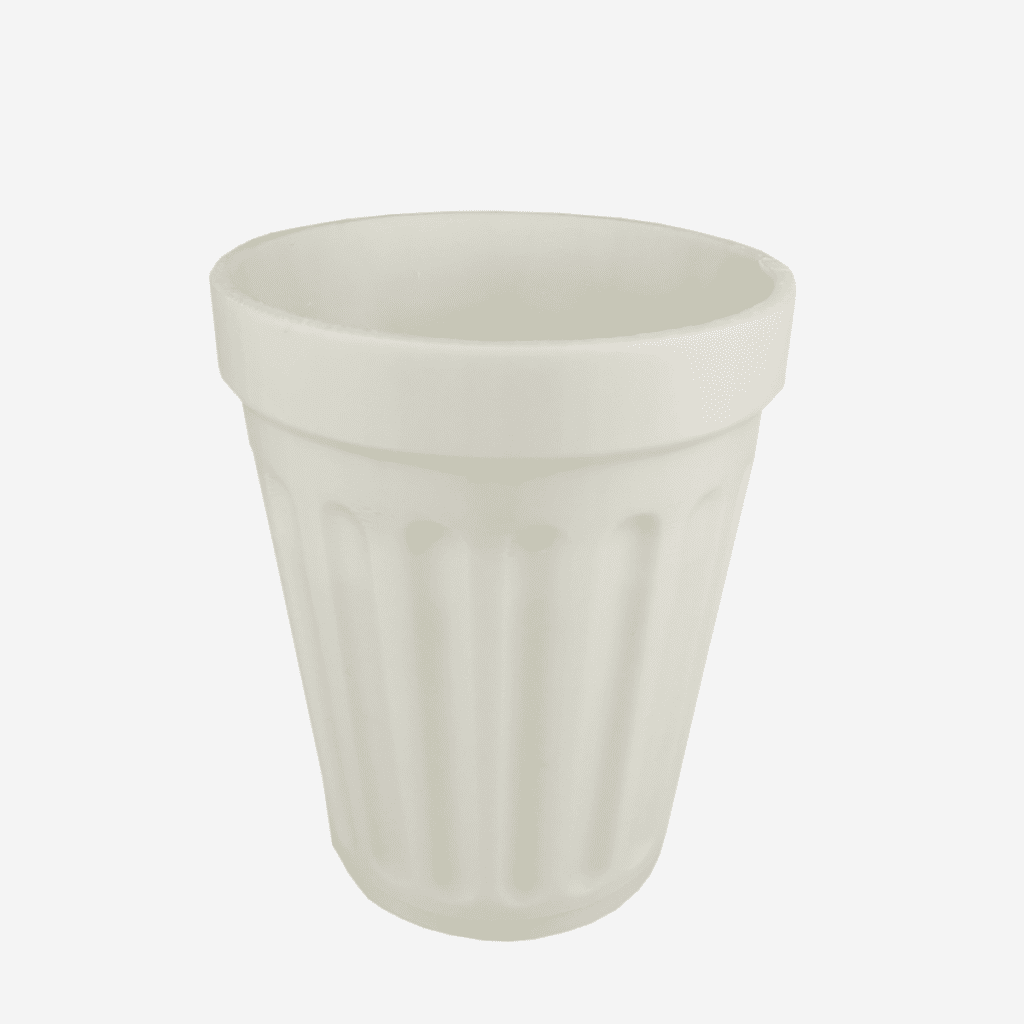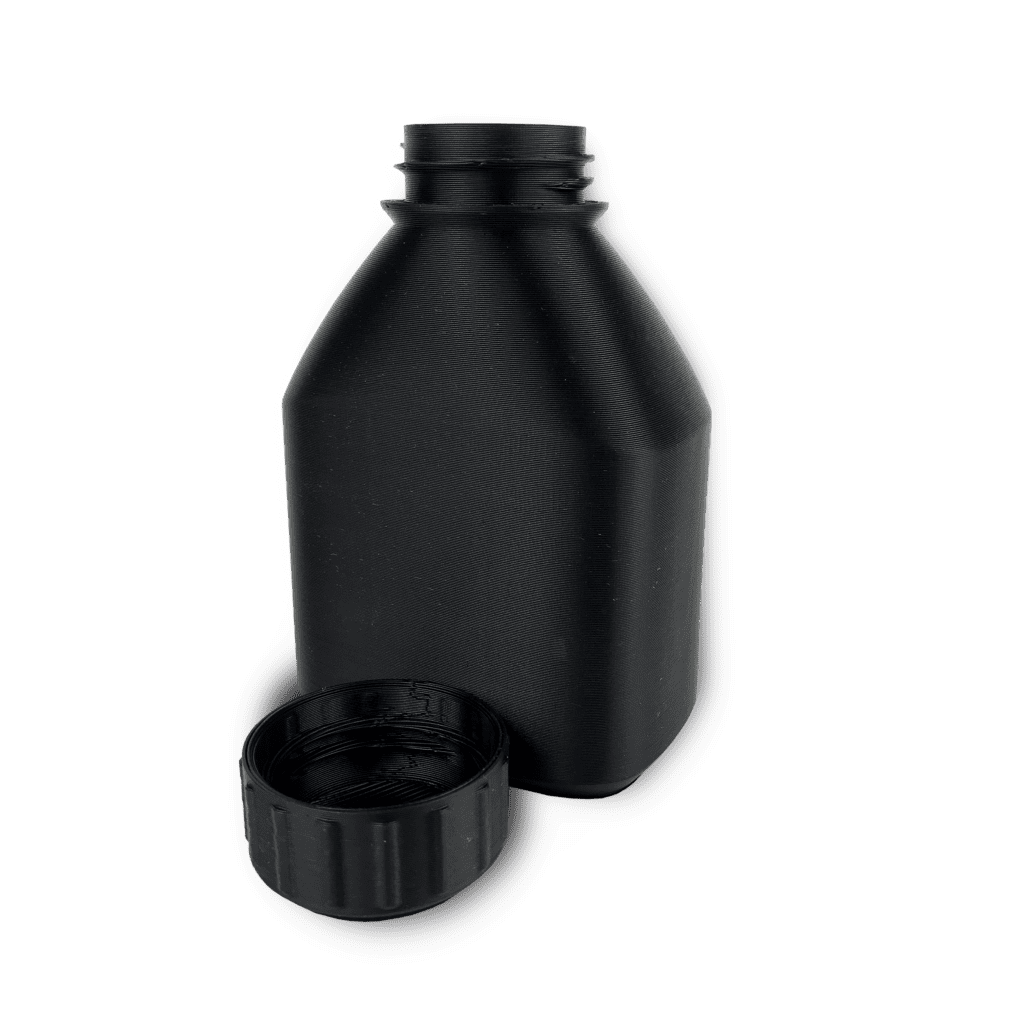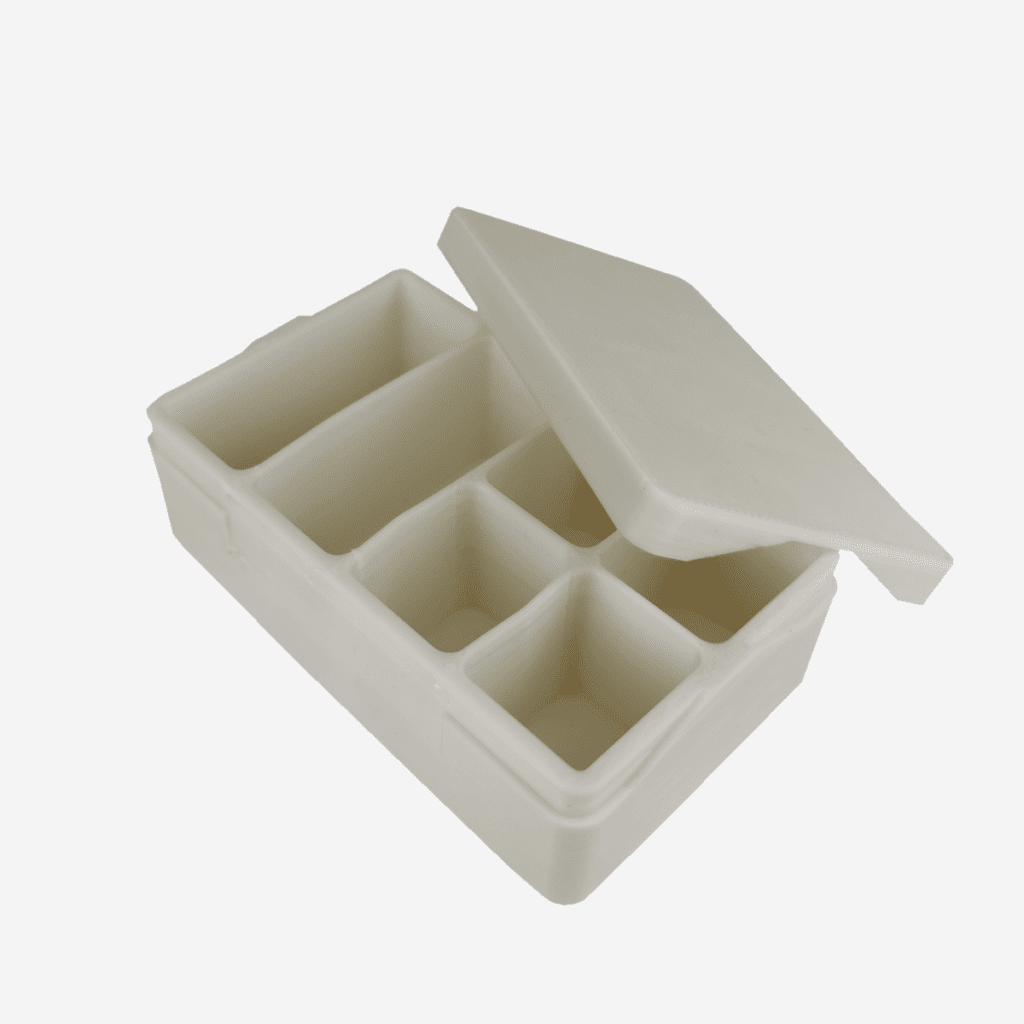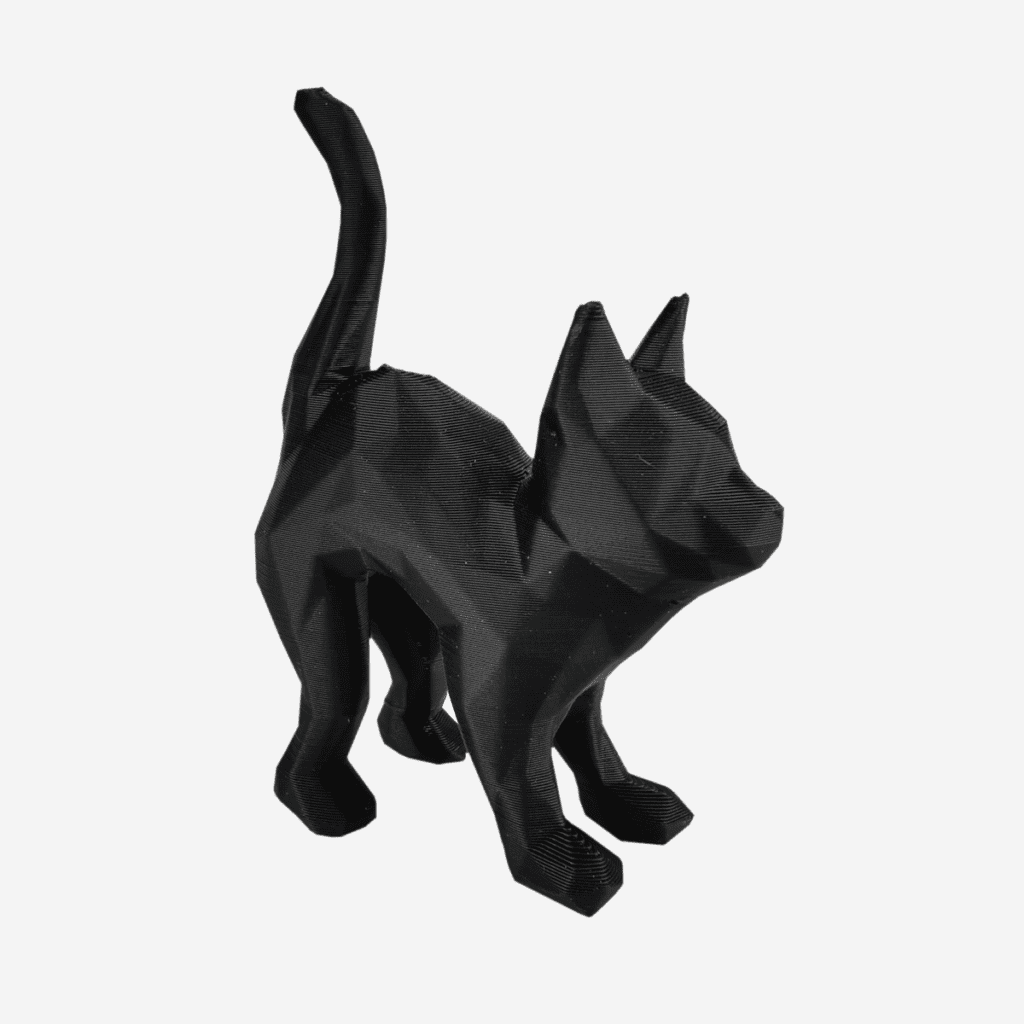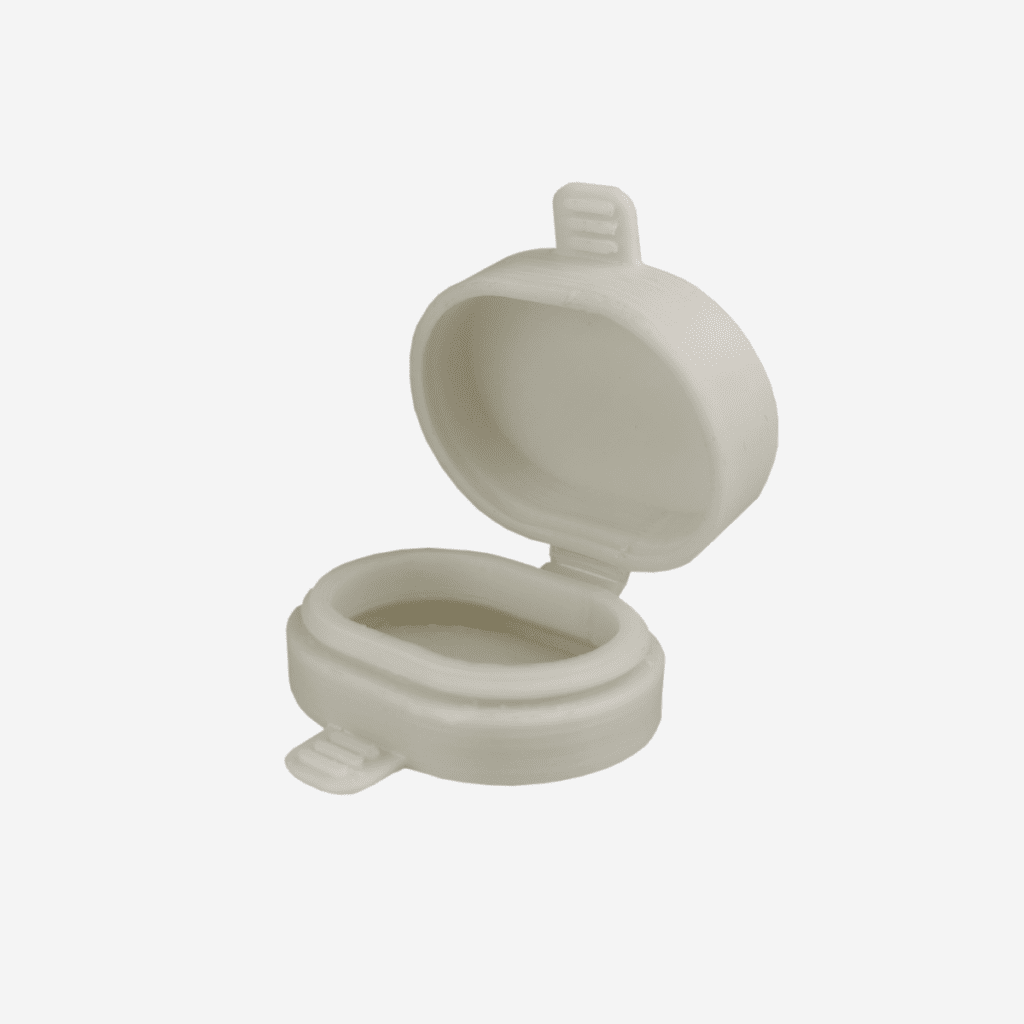Polypropylene properties:
- non-toxic and odorless
- high resistance to chemicals
- resistance to mechanical damage
- very good adhesion between the print layers
How to print Polypropylene?
The following parameters are only suggested print settings for this material. To ensure the best print quality, it is necessary to choose the appropriate settings for a specific printer and printing conditions.
| Nozzle Temperature | 220-250°C |
| Bed Temperature | not required when using a packing tape |
| Closed chamber | not required |
| Fan | 0-50% |
| Flowrate | 100-105% |
| Printing Speed | < 45 mm/s |
| Surface | packing tape |
| Retraction (direct) | 2-3 mm |
| Retraction (bowden) | 4-6 mm |
| Retraction Speed | 20-45 mm/s |
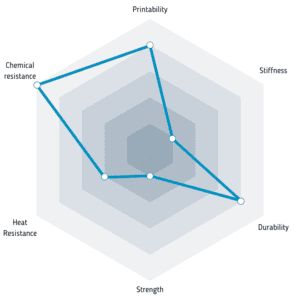

Fiberlogy PP has been positively assessed in the Open Filament Program (OFP) project run by Raise3D:
| Diameter | Diameter tol | Oval tol | Printing temp | Table temp |
|---|---|---|---|---|
| 1.75 mm | +/- 0.02 mm | + 0.01 mm | 220-250°C | not required |
Colors: PP (polypropylene)

Black

Natural

Light Green

Blue

Red

Orange
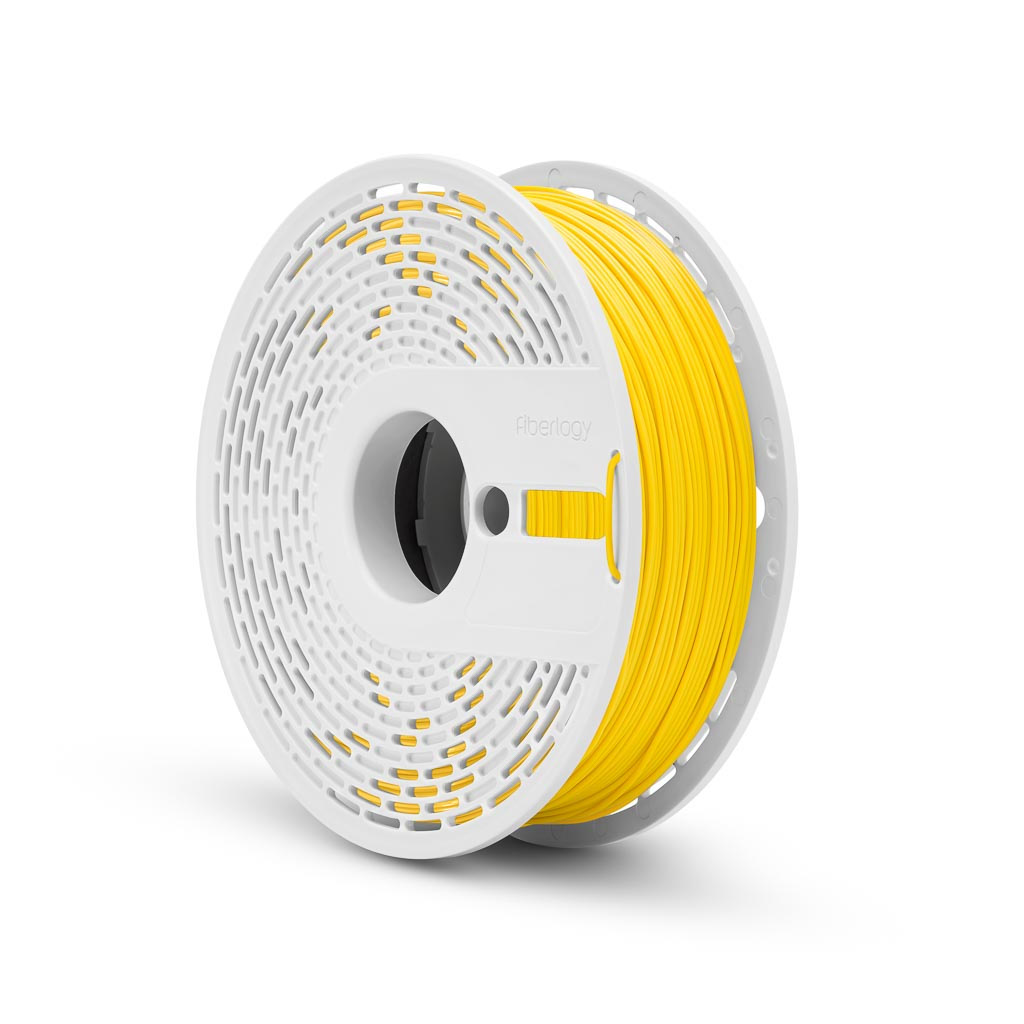
Yellow

Graphite

Gray

White
